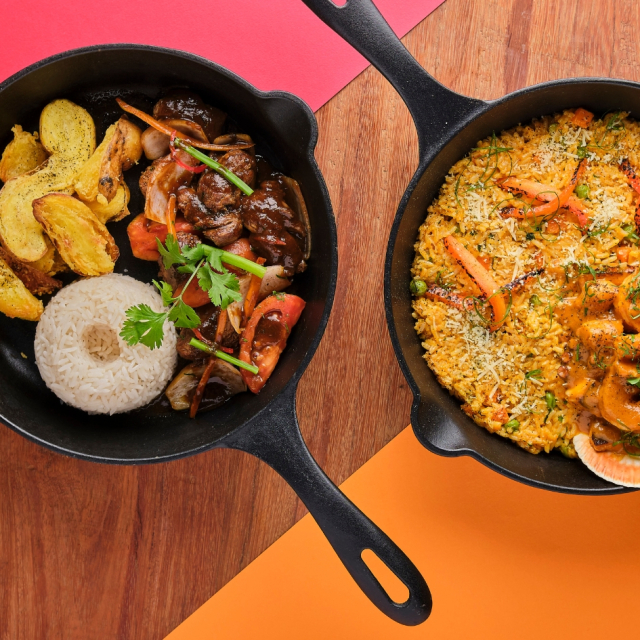Peruvian cuisine is known worldwide for its diversity, innovation and fusion of cultures. Recognized as one of the best cuisines in the world, it is a reflection of the mix of indigenous traditions, Spanish influence and other cultural contributions that have been consolidated over time. Within this culinary richness, there are foods that stand out for their popularity and are essential in the daily lives of Peruvians. In this article, we explore the four most consumed foods in Peru, their main characteristics and their cultural relevance.
1. Ceviche.
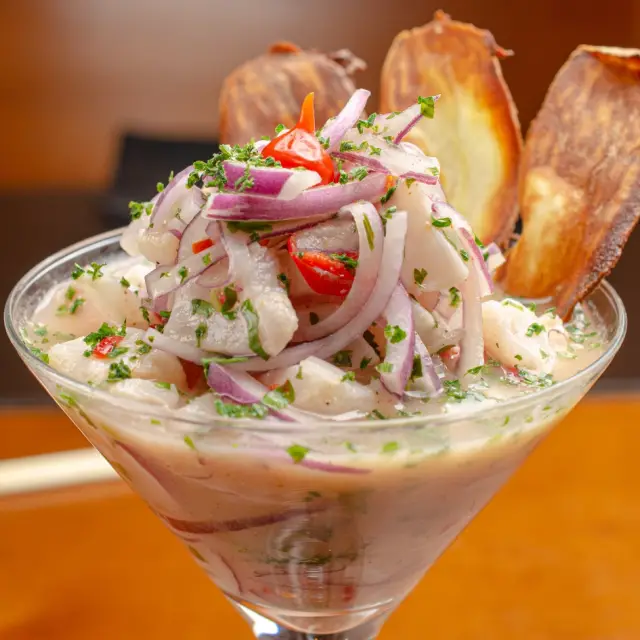
Ceviche is, without a doubt, one of the most emblematic dishes of Peru. It is a fresh and light preparation that captures the essence of the Peruvian coast. This dish, whose fame has transcended borders, is a national symbol that combines freshness, flavor and tradition.
- Main ingredients :
Fresh fish, lemon juice, red onion, limo chili, cilantro, salt, and as accompaniments: choclo (corn), sweet potato and, in some cases, seaweed. - Preparation :
Fresh fish is cut into cubes and "cooked" in the acidic lime juice. It is seasoned with salt, chili and cilantro, and mixed with julienned red onion. It is served with cooked sweet potato and corn, which contrast perfectly with the acidic flavor of the fish. - Consumption and tradition :
In Peru, ceviche is enjoyed mainly at midday, as it is believed that eating fresh fish is better in the early hours of the day. It is common to find it in cevicherías and on the menus of any Peruvian restaurant.
According to PromPerú , ceviche is considered Cultural Heritage of the Nation, which highlights its importance in Peruvian identity.
2. Lomo Saltado.
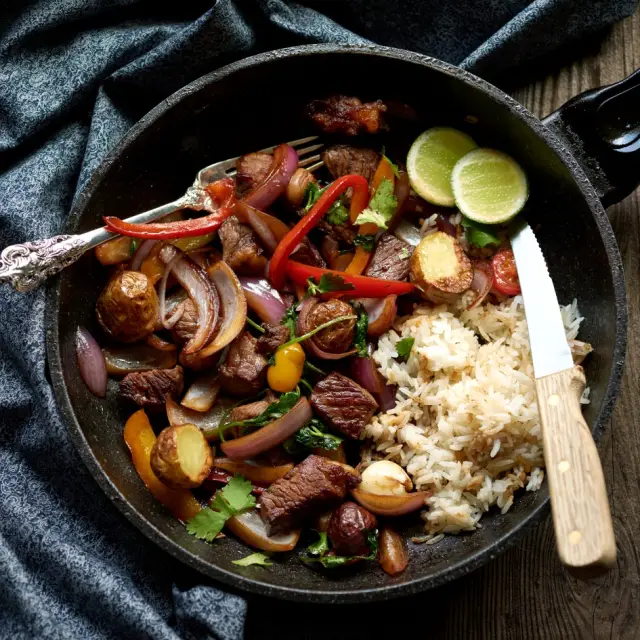
Lomo saltado is a dish that reflects the perfect fusion between Peruvian Creole cuisine and Chinese influence, a combination that results in a unique and tasty dish.
- Main ingredients :
Beef, onion, tomato, yellow pepper, French fries, white rice, soy sauce and vinegar. - Preparation :
The beef is stir-fried in a hot wok along with onion, tomato and yellow chili pepper, adding a touch of soy sauce and vinegar. The result is a juicy stew that is served with white rice and French fries. - Consumption and tradition :
This dish is a favorite for Peruvian lunches. Its popularity is due to its versatile flavor and ability to satisfy the appetite. It is commonly found on home menus and in Creole food restaurants.
According to El Comercio , lomo saltado is one of the most requested dishes by both locals and tourists, highlighting its "comfort food" character.
3. Chicken Chili.
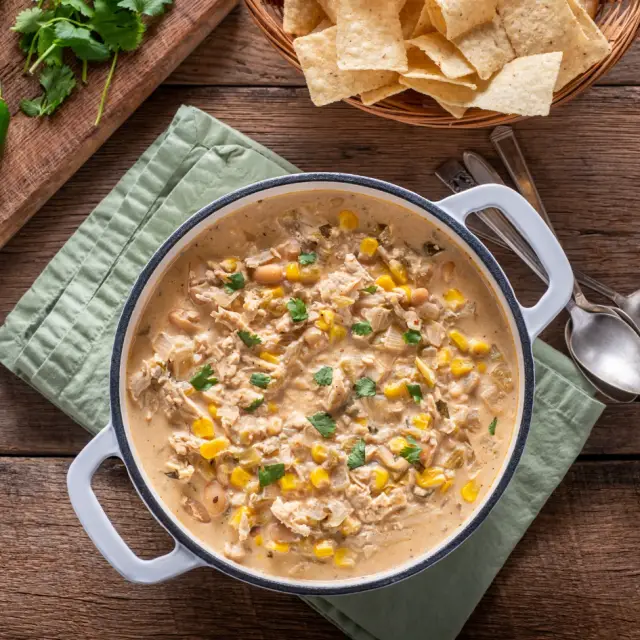
Ají de gallina is a creamy stew that combines ingredients from Creole cuisine with a preparation technique that makes it a comforting dish. It is one of the most traditional and beloved foods in Peruvian homes.
- Main ingredients :
Chicken, yellow chili, milk, soaked bread, nuts, parmesan cheese, potatoes, rice and hard-boiled egg. - Preparation :
The chicken meat is shredded and cooked in a sauce made from yellow chili pepper, milk, soaked bread and spices. It is served on slices of cooked potato, accompanied by white rice and decorated with hard-boiled egg and black olives. - Consumption and tradition :
It is a typical lunch dish that is usually prepared at family gatherings or special celebrations. Its combination of mild and spicy flavours makes it accessible to all tastes.
According to La República , ají de gallina has colonial roots and has been adapted with local ingredients to become an essential dish in Peruvian cuisine.
4. Grilled Chicken.
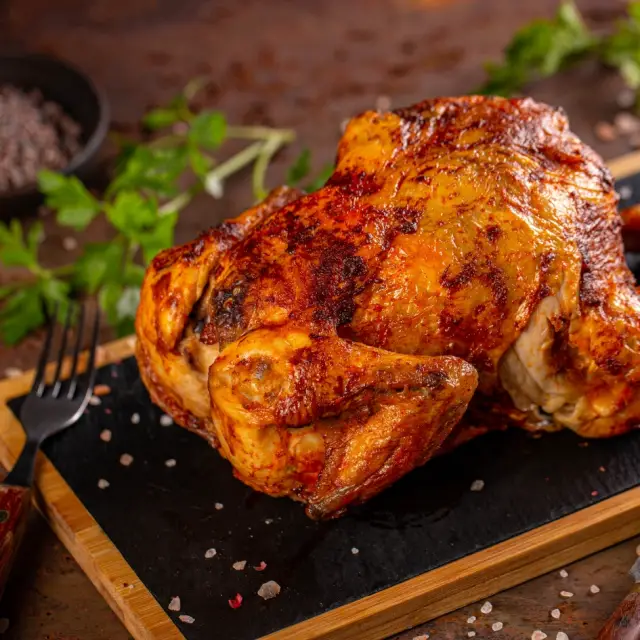
Grilled chicken is perhaps the most accessible and widely consumed dish by Peruvians in all regions of the country. This dish, which began as an exclusive recipe, has become popular and has become an icon of contemporary Peruvian gastronomy.
- Main ingredients :
Whole chicken, garlic, cumin, panca chili, salt, pepper and aromatic herbs. Side dishes: French fries and fresh salad. - Preparation :
The chicken is marinated in a mixture of spices and herbs, then slowly roasted over embers or a rotating oven, giving it its characteristic crispy skin and juicy meat. It is served with French fries and salad. - Consumption and tradition :
It is a popular meal for family gatherings, lunches and dinners. Its affordability and taste make it a favorite choice for all ages.
A report by Gestión mentions that grilled chicken represents one of the largest gastronomic consumptions in Peru, with more than 70 million chickens consumed annually in the country.
Cultural and Economic Impact of These Foods.
The four dishes mentioned above are not only part of the daily diet of Peruvians, but also have a significant impact on the country's economy and culture.
- Gastronomic economy :
- These dishes generate employment in multiple sectors, from agriculture and fishing to the restaurant industry.
- Tourism :
- Peruvian cuisine is a great attraction for international tourists, who consider these dishes an unmissable experience.
- National identity :
- Each dish tells a story and represents a mix of traditions, reinforcing cultural pride.
Peruvian cuisine is one of the most complete and admired in the world, and dishes such as ceviche, lomo saltado, ají de gallina and pollo a la brasa are perfect examples of its culinary richness. These dishes not only stand out for their unique flavors and preparation techniques, but also for their ability to unite people and reflect the cultural diversity of the country.
The impact of these meals goes beyond the table, as they contribute to economic development and strengthen national identity. Both Peruvians and tourists find in these dishes a connection with the roots and traditions of Peru, making gastronomy a cultural bridge that enriches everyone.
Sources consulted :
